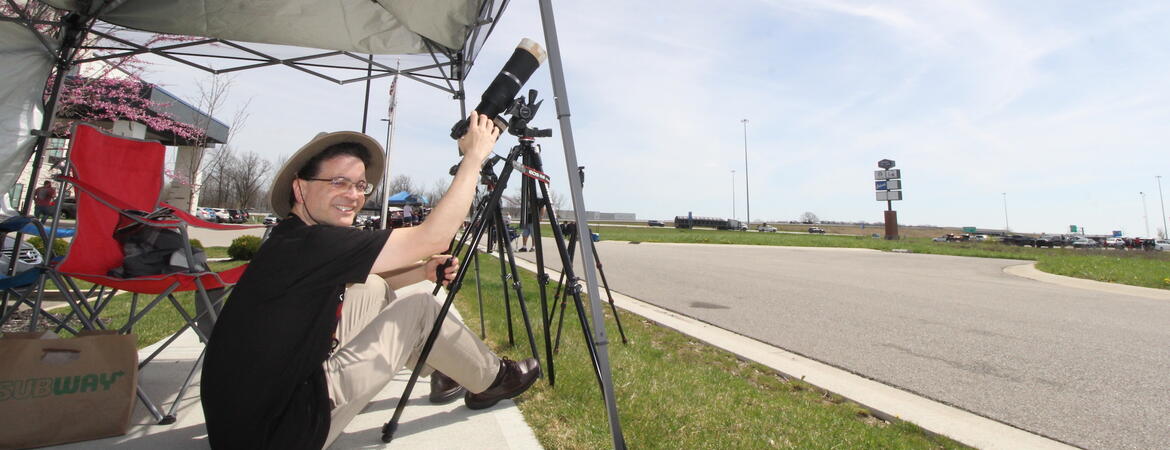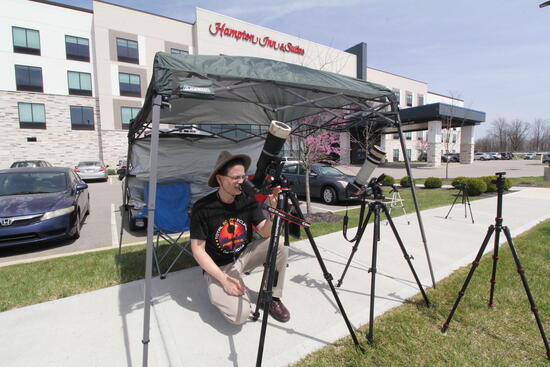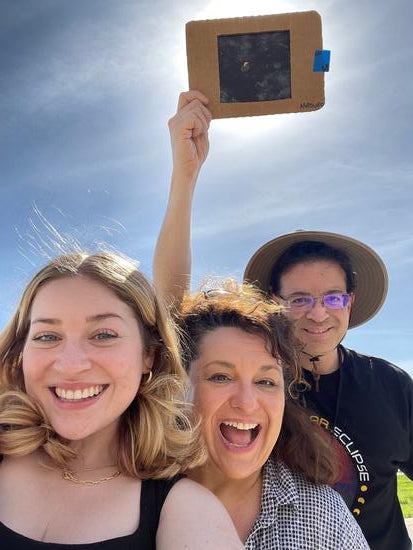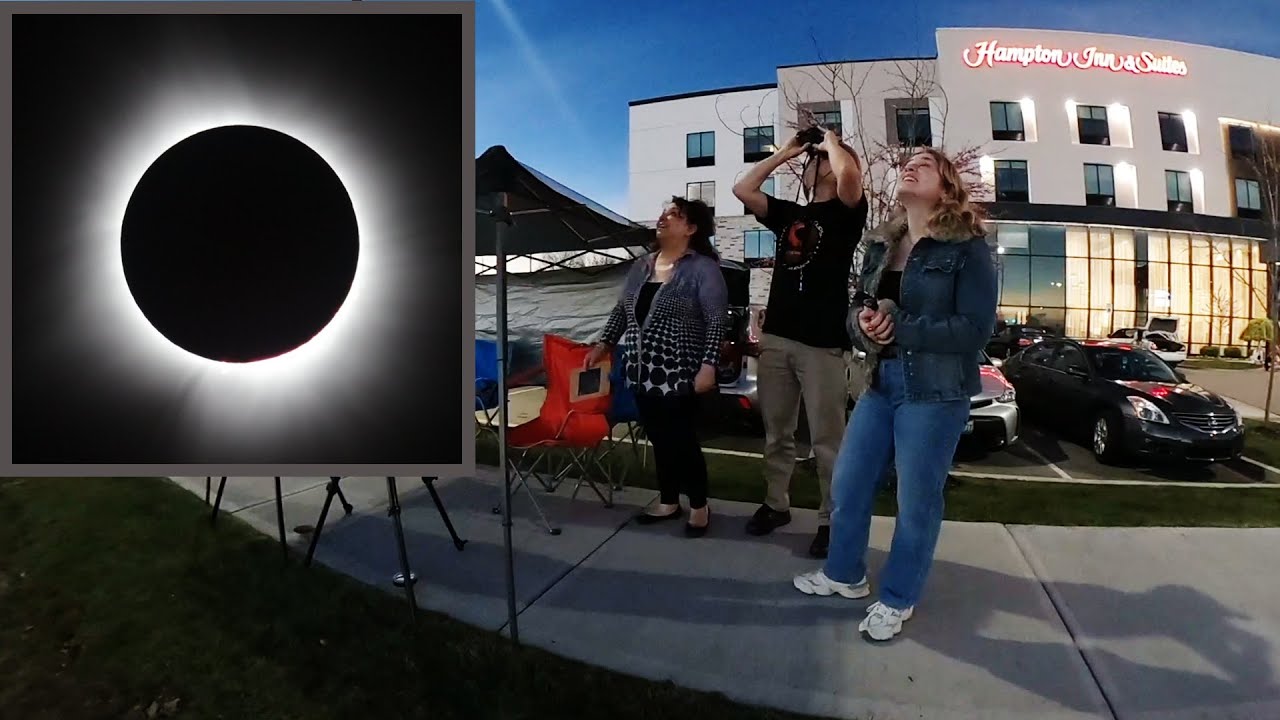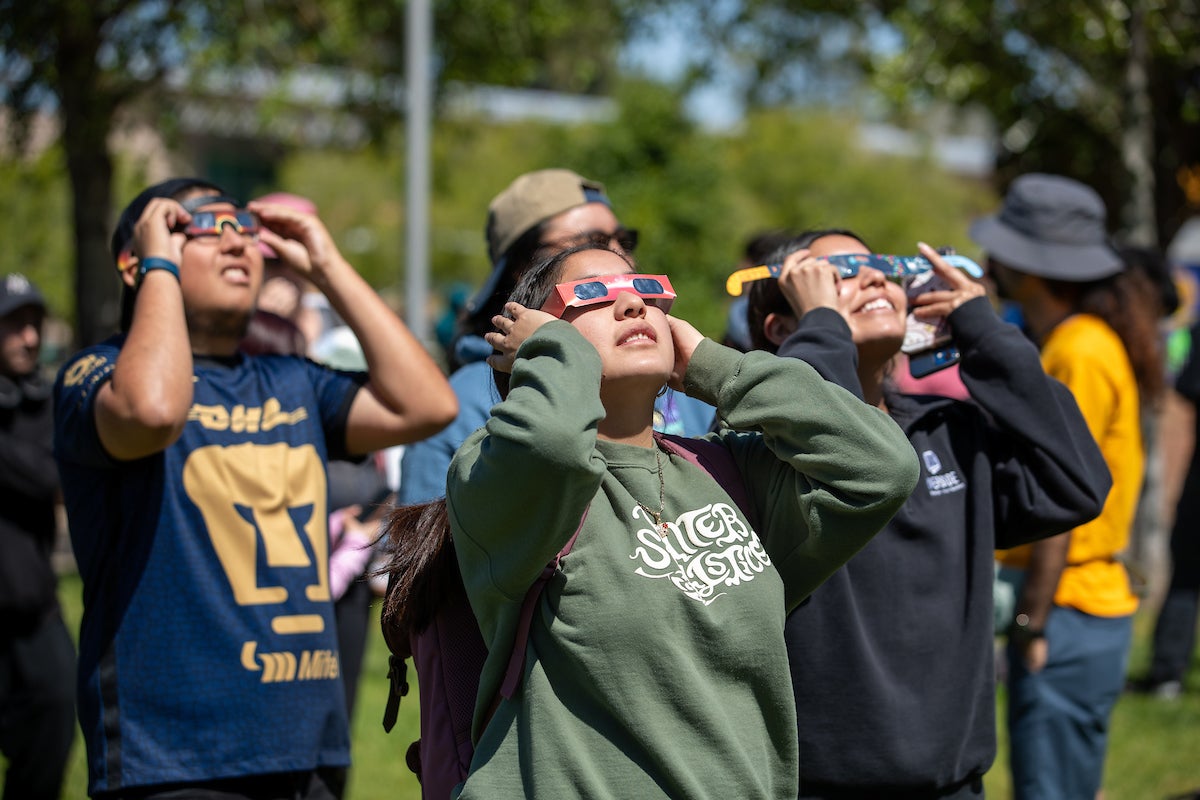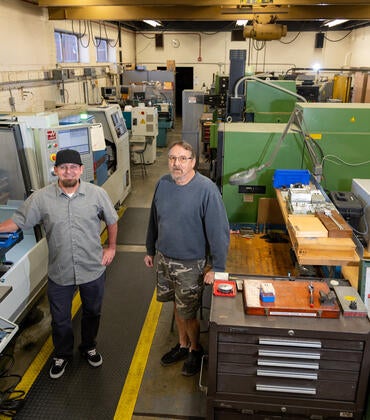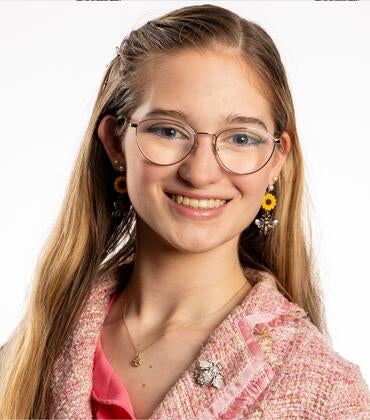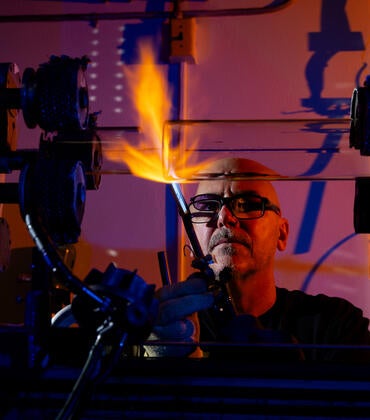Tens of millions of people watched the total solar eclipse on Monday, April 8, across Mexico, the United States, and Canada. Amateur astronomer and eclipse chaser Morris Maduro, his wife, and daughter were among them.
“We traveled to Indianapolis, Indiana, after having seen the dismal weather prospects for Dallas, Texas, our first destination,” said Maduro, who chairs the Department of Molecular, Cell and Systems Biologyat UC Riverside. “We found a location just south of Indianapolis, Franklin, that was favored to have the fewest clouds.”
When Maduro, his wife, Gina, and their daughter, Rena, arrived in Franklin, they found hundreds of other eclipse chasers in the parking lot of a Hampton Inn & Suites.
“We set up an easy-up and some chairs, and settled in for our eclipse experience,” Maduro said. “First contact, when the eclipse first started, was at 1:50 p.m. EDT. The total eclipse started at 3:06 p.m. and lasted for four minutes. It was all over at 4:23 p.m.”
A solar eclipse occurs when the Moon passes between Earth and the Sun in such a way that the Moon’s shadow falls on the surface of the Earth.
Maduro’s first exposure to a solar eclipse was in February 1979, when he was nine years old, attending elementary school in Edmonton, Canada. He recalled that the eclipse occurred with a path that crossed the northwestern United States. In Edmonton, the eclipse had a 93% coverage of the Sun at maximum.
“What I learned about eclipses then is that they occur because of the geometry of the Moon going around the Earth,” Maduro said. “Although the Moon’s orbit is tipped by about five degrees relative to the Sun-Earth system, every now and then the Moon will cross what’s known as the ecliptic plane and make an eclipse happen every six lunar cycles.”
Soon after, Maduro learned that every 18 years, 11 days, and eight hours, almost the exact circumstances that produced a solar or lunar eclipse recur with very similar characteristics.
“This was recognized by many astronomers independently over history,” he said. “Edmond Halley was the first to call the eclipse cycle the Saros cycle. One of them, Saros 136, produces solar eclipses with a very long totality in the 20th and 21st centuries. The next occurrence of this cycle will be over the southern Mediterranean Sea in 2027. Gina, Rena, and I are planning to see it. Its totality is calculated to be 6.4 minutes at maximum.”
Maduro first saw a total solar eclipse, which is when the Moon completely covers the disk of the Sun, in February 1998, when he and Gina were in Aruba on their honeymoon. They were so thrilled to witness the solar phenomenon that they made plans to catch the next total solar eclipse scheduled for August 11, 1999, over Europe.
“We went to a city in north-central Turkey called Kastamonu and watched the eclipse from there,” Maduro said. “We had some clouds right around totality, but we had enough minutes of the total phase to enjoy the eclipse.”
Eighteen years, 11 days, and eight hours later, the couple were in Casper, Wyoming, to catch the eclipse of August 21, 2017.
“Both the 1999 eclipse and the 2017 eclipse are members of Saros cycle 145, so they were very similar,” Maduro said. “As soon as the totality was over, a lot of people, including us, were trapped in a long traffic jam going back to Denver, some 280 miles away. We were in traffic for 13-14 hours.”
Chasing total solar eclipses is worth such “carmageddons” for Maduro and his wife.
“You’re in alignment with the Sun 93 million miles away and the Moon a quarter million miles away, and for a few minutes the Sun, essential for life on Earth, is blocked from view by the Moon,” Maduro said. “It’s otherworldly and life changing for many people. I can’t think of a bigger phenomenon in which you participate with millions of others. People who have seen a total solar eclipse usually want to try seeing more of them as many times as they can. It’s why we traveled to Indiana on Monday and saw what became the fourth total solar eclipse for me and Gina and the second for Rena.”
Besides Maduro, other faculty members in the College of Natural and Agricultural Sciences, including Patricia Springer and Richard Debus, made plans to see the eclipse.
A solar eclipse viewing party was held at UCR, organized by Alexander de la Vega, outreach coordinator in the Department of Physics and Astronomy. Under a clear blue sky, nearly 500 people gathered near the bell tower to catch the eclipse through special glasses as well as a few telescopes set up by UCR’s Astronomy Club. At 11:13 a.m. PDT, the partial eclipse peaked at 51%.
The next total solar eclipse that can be witnessed in the U.S. (Montana, North Dakota, and South Dakota) will take place on August 23, 2044.
Header image credit: Rena Maduro.
Extracurricular is a new ongoing series spotlighting hobbies, interests, and passion projects by UCR students, faculty, and staff members. If you have suggestions for future profiles please contact news@ucr.edu
